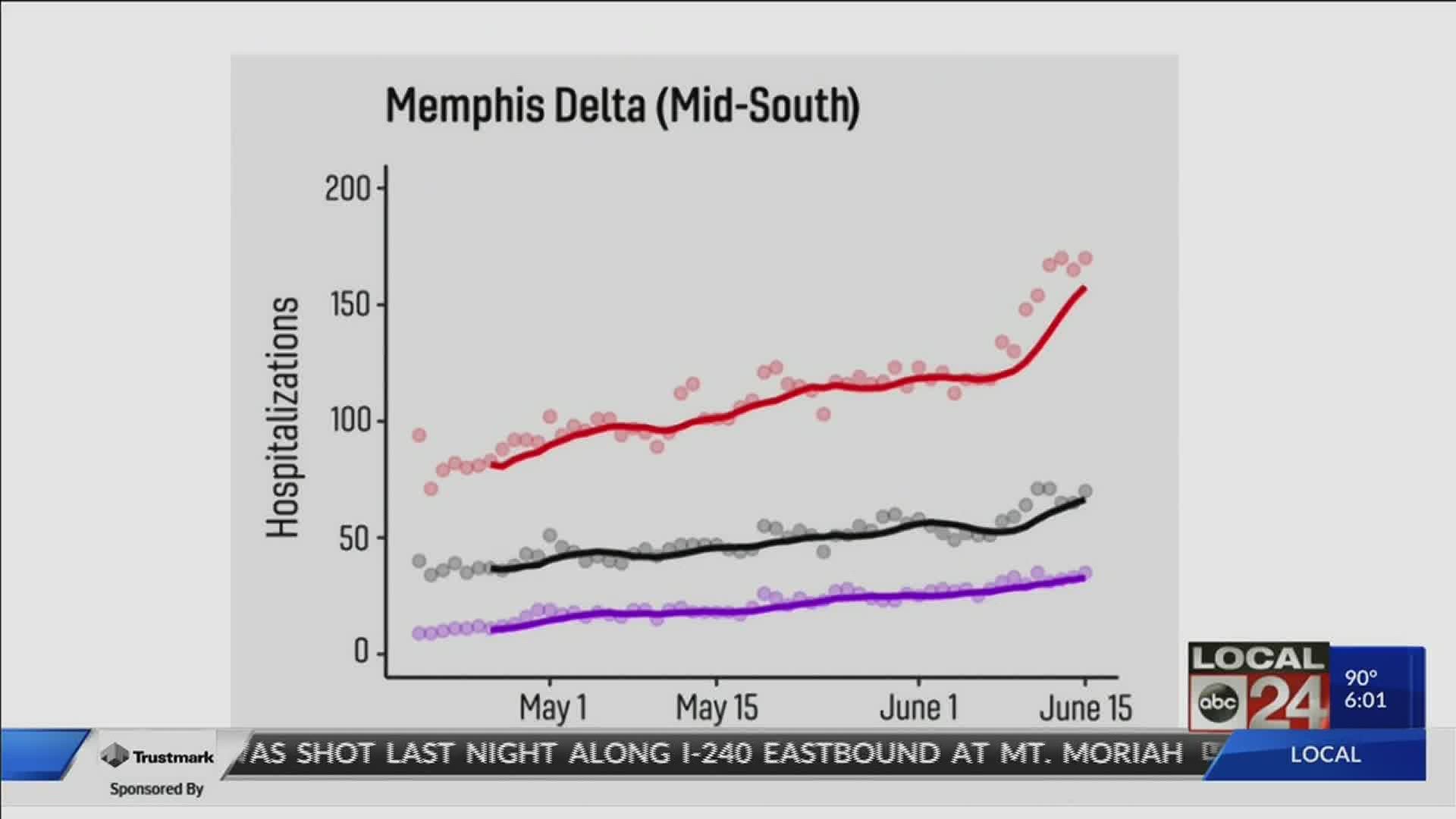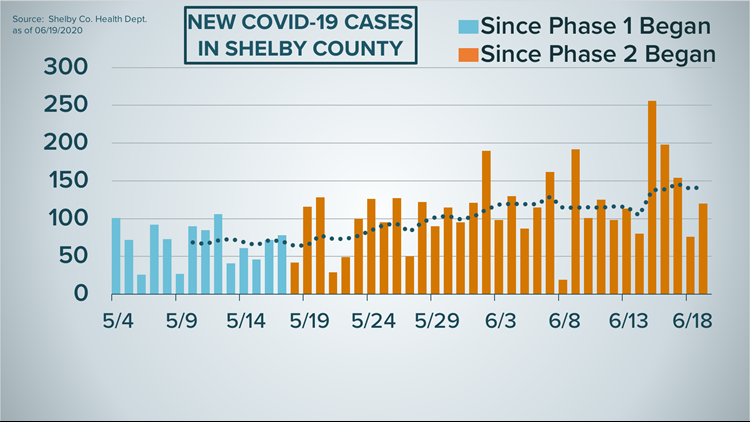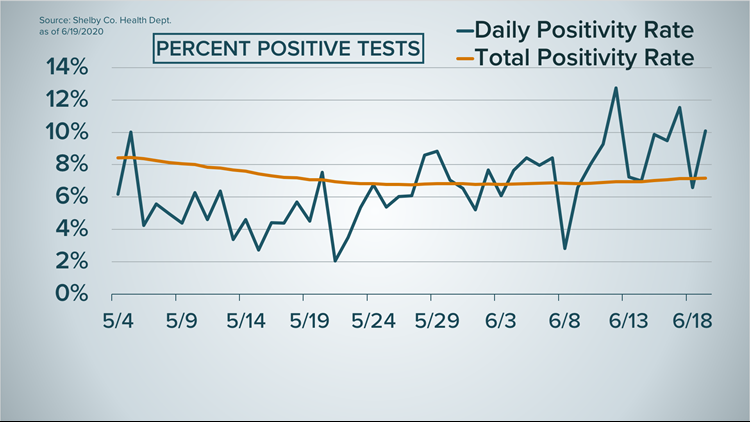MEMPHIS, Tennessee — Vanderbilt University researchers say Tennessee's COVID-19 numbers will continue going up unless something is done to reverse the trend. The universities latest COVID-19 modeling report shows as many as 1,000 Tennessee hospital beds could be filled with COVID 19 patient by late July.
So what does that mean for Memphis? Monday, Baptist Memphis hospital reported having 50 COVID-19 patients. Friday, there were 61.
The rise in hospitalizations is a trend Vanderbilt researchers are concerned about.
"We are certainly on an uptick. Cases continue to grow. Hospitalizations continue to go up, and that's the wrong direction," said Melissa McPheeters, Vanderbilt researcher.
McPheeters says Memphis is one of two areas leading the state with an increase in COVID-19 hospitalizations. The other area is Chattanooga.
MCPheeters says as of last week, Memphis' transmission rate, known as the "R" rate, was higher than cities like Nashville. Memphis' rate was as high as 1.29. Nashville's was 1.16. The state average was 1.13.
"That R rate is really important because that is our transmission number and that is giving us a sense of the pace and spread of the disease," said McPheeters.
McPheeters says even if the transmission rate stays the same, the Vanderbilt model predicts 1,000 hospitalizations in Tennessee by late July. But McPheeters say that number could easily go higher.
"We don't have a specific number across the state that we would say that puts us in a danger crisis zone. But I will say that 1,000 number, if we have picked for our mark for our hospitalization modeling, is almost twice than we are right now. So that is a lot of concurrent hospital beds filled.”
Researchers are now evaluating what they call a "case mix index" that will assess not only the number of new cases, but include things like the age of patients, to help assess the needs of a community.
"It helps us to start to understand even though cases continue to go up quite quickly in Tennessee, who’s getting diagnosed and are the people getting diagnosed particularly at higher or lower risk for hospitalization.”
McPheeters says the bottom line, "Right now, I think we are right on a sort of a razor’s edge of potentially growing quickly or trying to get it under control."
According to Vanderbilt’s model, the only way to avoid the 1000 hospitalizations is to get the transmission rate down under 1.0. Medical experts say social distancing and the wearing of masks reduces transmission.









